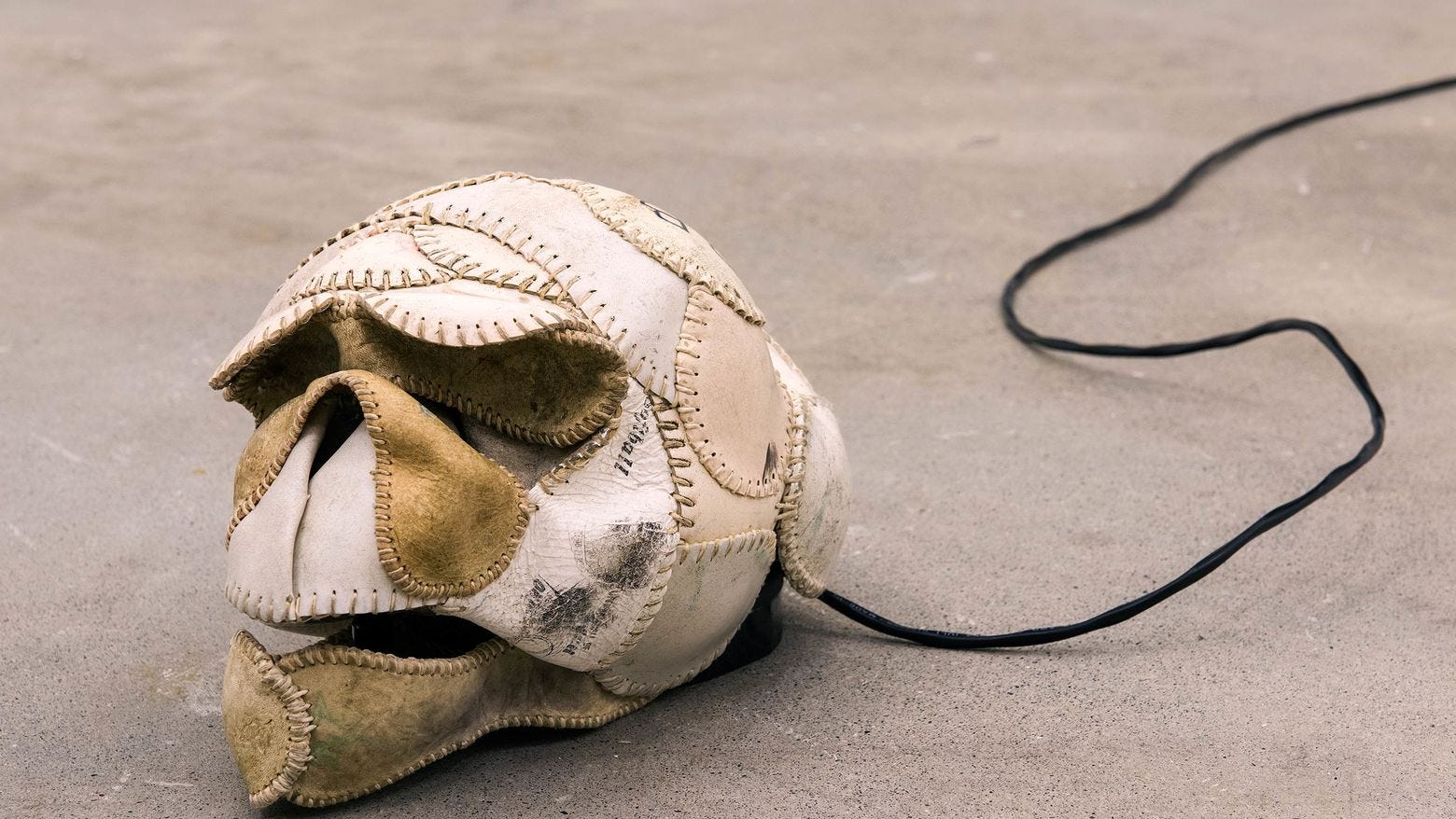The Histories (Old Black Joe) & The Evening Redness in the West (Capsule Review)


[Original publication: No Proscenium, 11/24/21]
Currently at the Hammer Museum are two artworks spotlighting the transportive quality of sound.
Get Laura Hess’s stories in your inbox
Join Medium for free to get updates from this writer.
SubscribeSubscribe
First is The Evening Redness in the West by Canadian artist Brian Jungen. Jungen dismantles baseballs and leather home theater seats and rebuilds them into skulls and a saddle. These are connected to a DVD system and an amplifier casts out audio from western films. With each gunshot, explosion, or brawl the saddle bucks across the gallery on its wooden frame. The skulls and saddle embody violent stereotypes of Indigenous people as depicted in popular culture. The presentation is disarming.
The second work is by fellow Canadian artist David Hartt. The Histories (Old Black Joe) consists of two large tapestries depicting pastoral settings. These are based on photographs which are based on paintings by Robert S. Duncan (the sole Black member of the Hudson River School), and Michel-Jean Cazabon (the first internationally acclaimed painter from Trinidad).
A quadraphonic setup (four speakers, one in each of the room’s four corners) accompanies the tapestries, playing the song “Old Black Joe,” a mournful lament of a dying slave. Hartt’s piece emphasizes the historical reimagining of identity and (mis)representation of people of color. The visual works combine with music, offering “an opportunity to study and listen to — specifically to sit with — cultural pasts once removed.”
Both installations provide sensorial windows into the legacies of colonialism. Our cultural landscape continues to be rife with racial and social injustice. These works extend visceral representations of erasure, a confrontation with its lasting effects, and a moment to reflect on the work required to move forward.